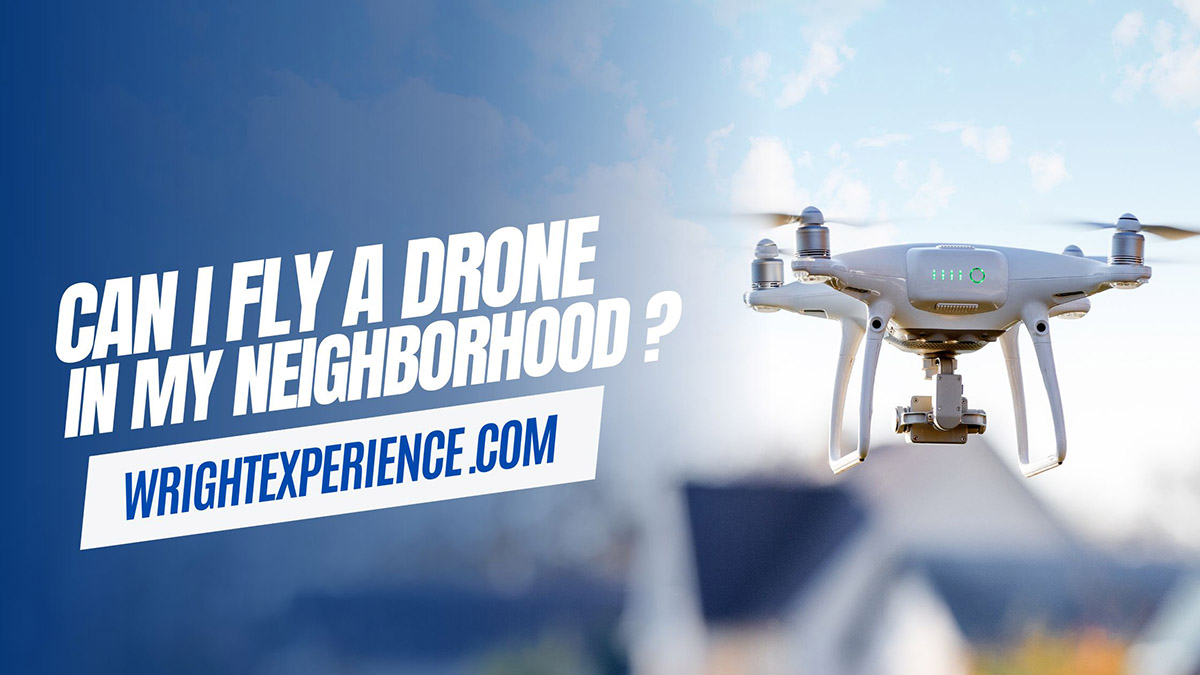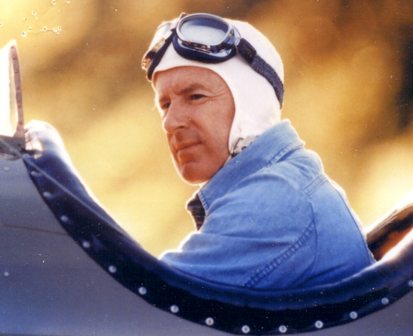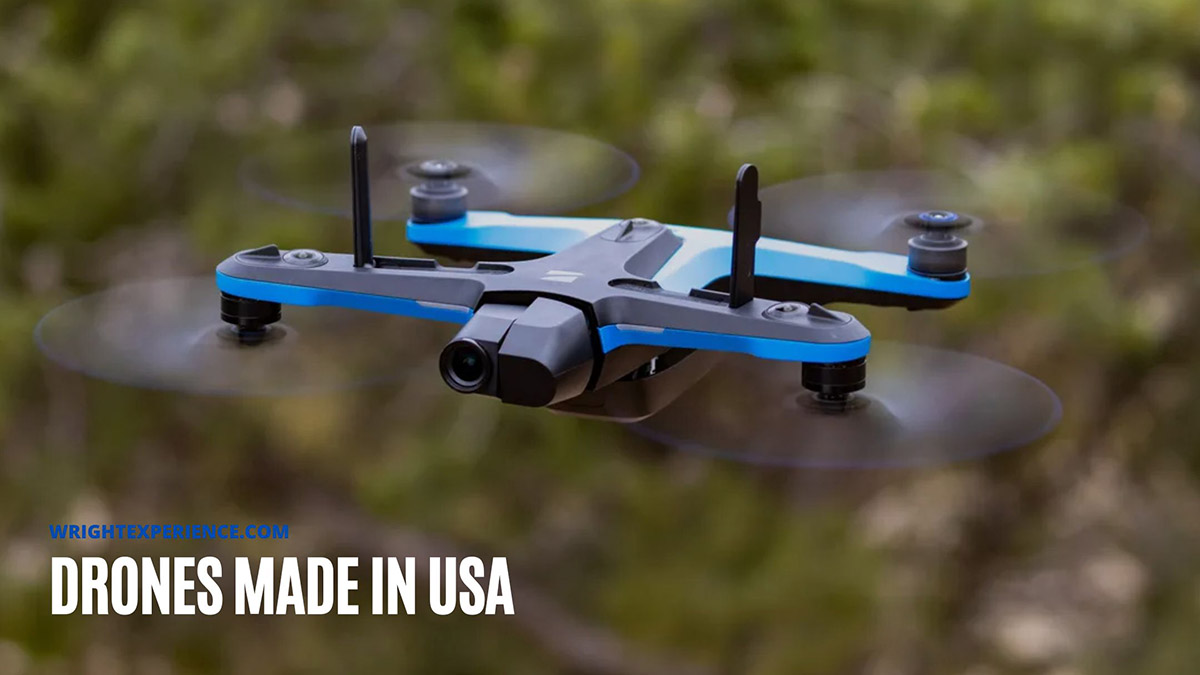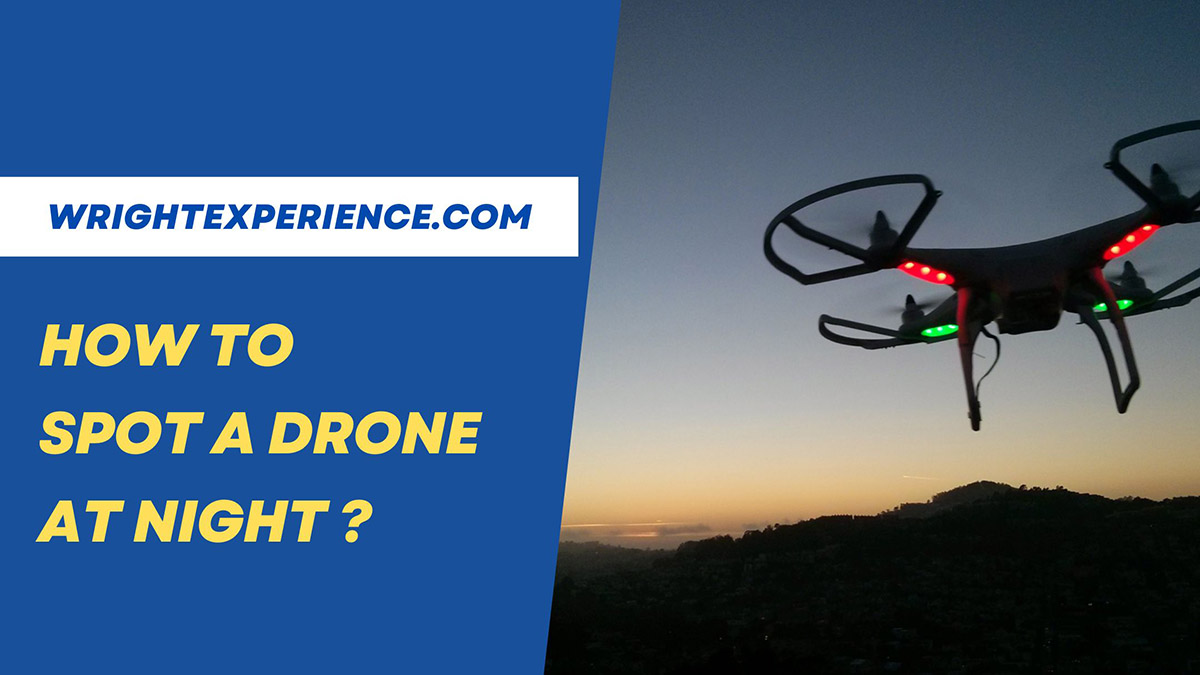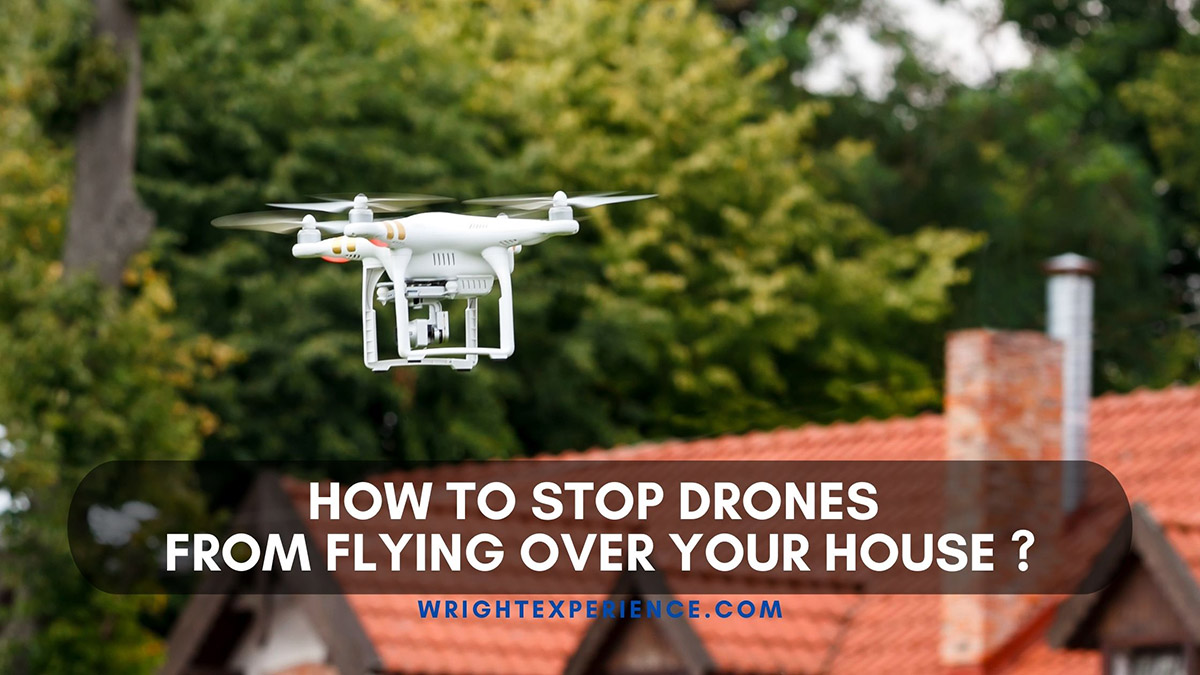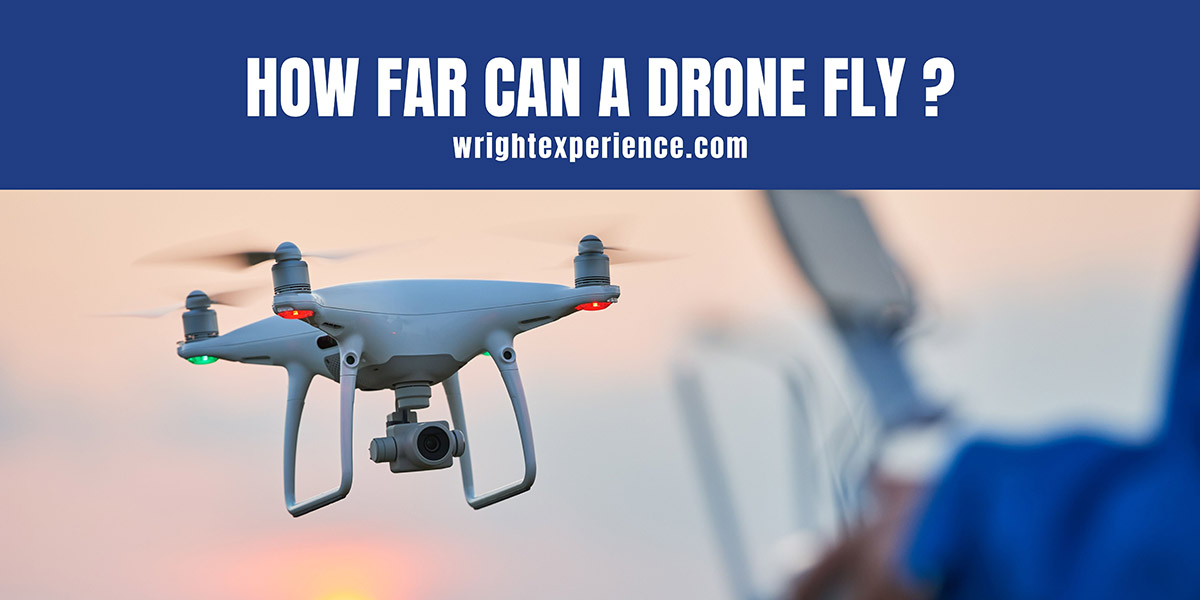Drones, also known as unmanned aerial vehicles (UAVs), have become increasingly popular recently, with hobbyists and professionals using them for various tasks. However, flying drones in residential areas can be controversial, with some raising concerns about privacy, safety, and noise.
Our team at The Wright Experience also received many similar queries, and that’s why we’re writing this blog post to cover everything you need about drone use in a residential area, from the rules and regulations to the best practices.
In this article:
Can You Fly Your Drone In A Residential Area?
Yes, you can fly your drone in your neighborhood, like your property, backyard, or your neighbors’ property, but it’s essential to follow local regulations and respect privacy and safety guidelines.
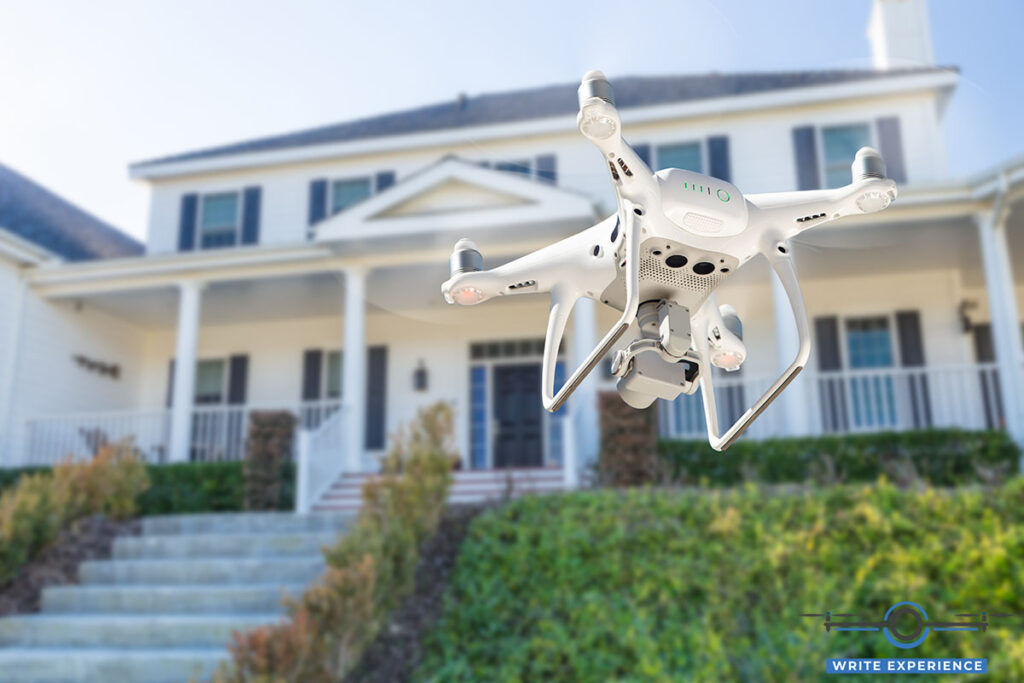
We’ve gained a solid understanding of FAA rules through our work and research in the field of aviation at The Wright Experience, and we’d like to share some key insights from these regulations with you.
Tips To Safely Fly a Drone in Your Neighborhood
1. Get Your Drone Registered
Before we take off, it’s crucial to register your drone with the appropriate aviation authority in your area, like the FAA. The FAA (Federal Aviation Administration) is the U.S. government agency in charge of regulating and ensuring the safety of all aspects of civil aviation, including drones.
This registration not only ensures you’re aware of the rules and guidelines but also allows authorities to track and manage drone usage for the greater good of all.
2. Understand the Local Regulations
Trust us; you don’t want to find yourself on the wrong side of the law while enjoying your drone adventures. Local drone rules can be as diverse as the neighborhoods they cover. They range from altitude limits, no-fly zones around airports, and other sensitive areas to the nitty-gritty of how you should handle privacy concerns.
3. Keep Eyes on Your Drone
Keep a visual on your bird at all times. Why? If you can see your drone, you can control it effectively, navigate around obstacles, and ensure your flight is as smooth as butter. Think of it like driving your car without taking your eyes off the road.
4. Seek Neighbors’ Approval
Before you hit the skies, why not have a friendly chat with your neighbors? Asking for their approval before launching your drone shows respect for their space and privacy. Plus, it’s an excellent way to open up lines of communication and address any concerns they might have.
However, there’s an important point: if your neighbor prefers that you don’t fly near their property, it’s essential to respect their wishes. Everyone has their comfort levels and concerns, so don’t make them feel wrong for expressing their feelings.
5. Ensure a Safe Distance
When flying your drone, maintain a safe distance from people, buildings, and objects. By keeping a reasonable distance, you’re not only reducing the risk of accidents but also preventing any unintended intrusions or disturbances.
6. Choose Spacious Flying Locations
Let’s aim for the open skies whenever we can. They come with fewer obstacles, making you less likely to bump into things or accidentally get your drone stuck somewhere. It’s like having a blank canvas to work with, and it’s fantastic for capturing those breathtaking aerial shots or smooth, cinematic videos.
7. Weather Checking
Just like we check the weather before planning a day out, we should do the same before drone adventures. High winds and rain can throw a wrench into your plans, so it’s best to fly when the weather is on your side.
8. Steer Clear of Electrical Lines
These high-voltage lines are not something you want your drone to tangle with. Flying near them can lead to all sorts of problems, from signal interference to even the risk of physical contact, which, let’s face it, doesn’t end well.
By staying well away from electrical lines, you’re not only keeping your flights smooth but also reducing the chances of damage.
Where Can You Fly a Drone?
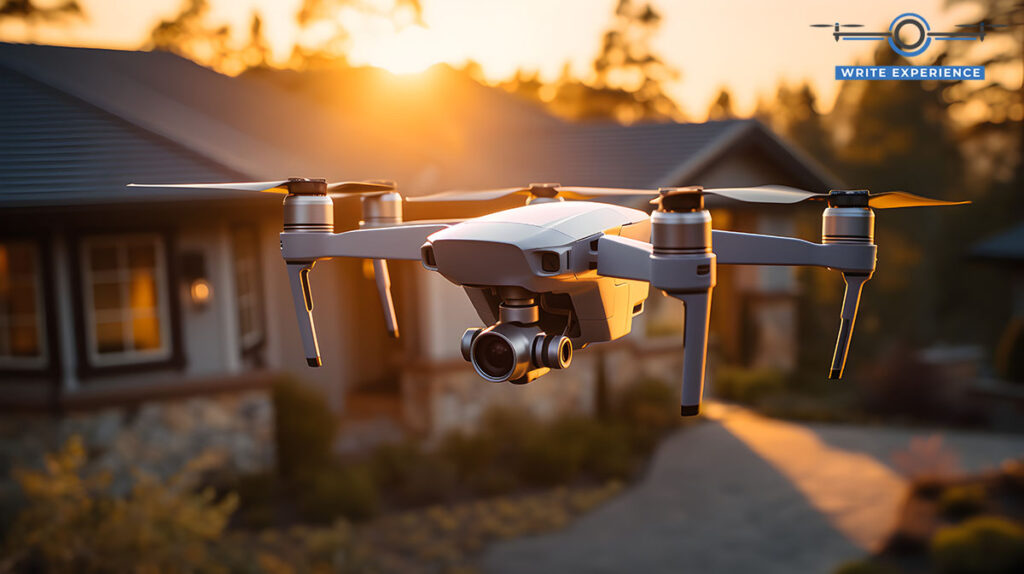
Here are some places for flying your drone that, according to our experience, will ensure an uneventful adventure.
1. FAA-Approved Locations
Think of FAA-approved locations as your hassle-free go-to spots. These are handpicked by aviation authorities to ensure safety and compliance with regulations, including property boundaries. We’ve had some fantastic flights in these areas, knowing we can focus on capturing incredible footage without worrying about local restrictions or crossing property boundaries.
2. Public Parks and Recreation Areas
Public parks have been our favorite for drone flights. There’s something magical about the wide-open spaces, lush greenery, and stunning landscapes. You can capture some breathtaking shots at these locations. Just remember to check local drone regulations and, if needed, obtain permits to ensure you’re flying within the rules and not straying into no-fly zones.
3. Your Backyard
Your backyard can be a cozy and convenient spot for drone flights, but it’s vital to maintain good relationships with your neighbors. Having a quick chat with them to explain your plans and ask for their permission goes a long way, especially when respecting property boundaries and privacy.
Remember, while these are some great options for drone flights, it’s essential to combine them with a responsible and considerate approach to ensure a safe and enjoyable experience for everyone while adhering to drone flight restrictions in your chosen locations.
What To Do If A Neighbor Is Flying A Drone Over Your House?
If you find a neighbor flying a drone over your house, it can raise privacy and safety concerns. Here’s a comprehensive approach to address the situation while maintaining a friendly tone:
1. Talk to Your Neighbor
Start with a friendly chat. Approach your neighbor and express your concerns about their drone flights over your property. Share your experiences and thoughts about its impact on your daily life. In our experience, this approach has often led to productive conversations, as many neighbors may not fully grasp the implications of their drone flights.
2. Contact the Authorities
If talking to your neighbor doesn’t yield results and their drone flights persist, you can contact the appropriate authorities. You can reach out to the FAA as we did to address a similar issue. They have established rules regarding drone use, especially regarding flying over private property. These regulations aim to strike a balance between the rights of drone users and property owners, addressing airspace restrictions.
3. Consider Legal Action
As a last resort, if all else fails, you may need to explore legal options. This could involve filing a lawsuit for invasion of privacy or trespass against your neighbor.
FAQs
What Should I Do If My Drone Crashes On Someone’s Property?
If your drone crashes on someone’s property, the first thing you should do is apologize to the homeowner. Explain that you are a responsible drone pilot and did not mean to crash your drone on their property.
Next, you should ask the homeowner if you can retrieve your drone. If they say yes, respect their property and avoid causing any damage.
When your drone causes any damage to the homeowner’s property, you should offer to pay for the repairs. Remember to provide the homeowner with your contact information so that they can reach you if they have any questions or concerns.
Do I Need A License To Fly A Drone In My Neighborhood?
The need for a license to fly a drone in your neighborhood can vary depending on your location and the purpose of your drone flights. Here’s a general guideline:
- Recreational Use: In many countries, if you’re flying a drone for recreational purposes and it weighs below a certain threshold (e.g., under 0.55 pounds or 250 grams in the United States, according to the FAA), you may not need a specific drone pilot’s license. However, you should still adhere to local regulations and guidelines.
- Commercial Use: If you intend to use your drone for commercial or non-recreational purposes (e.g., aerial photography for clients, real estate, or inspections), you will typically require a drone pilot’s license or certification. In the United States, this is known as a Part 107 Remote Pilot Certificate, which involves passing an exam.
Am I Allowed To Shoot Down A Neighbor’s Drone If It Trespasses On My Property And Invades My Privacy?
No, you cannot shoot down a neighbor’s drone if it trespasses on your property and invades your privacy. Doing so could be considered vandalism, property damage, or even assault.
If you see your neighbor’s drone flying over your property, the best thing to do is to take a photo or video of it and then contact the authorities. They will be able to investigate the incident and take appropriate action.
Conclusion
Flying drones in residential areas can be a fun and rewarding experience, but it’s important to do so safely and responsibly. By following the tips and guidelines outlined in this blog post, you can minimize the risks and ensure a pleasant experience for everyone involved.
If you have any questions or concerns, don’t hesitate to reach out to the appropriate authorities or consult with a drone expert. Happy flying

